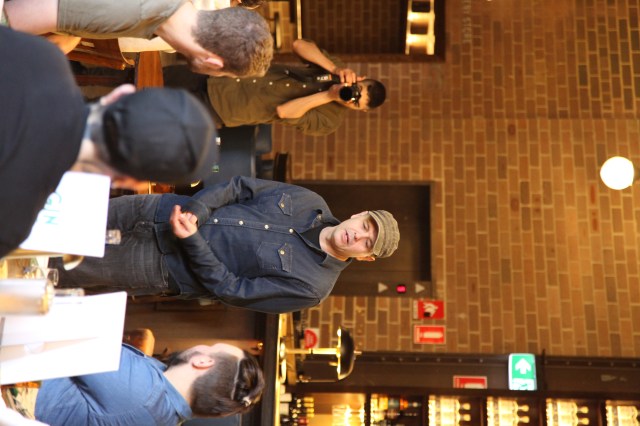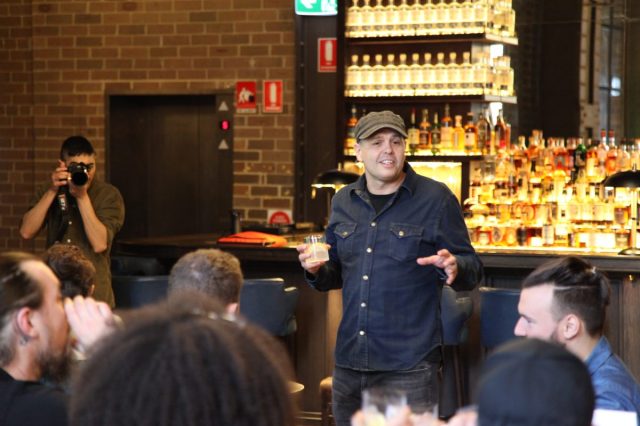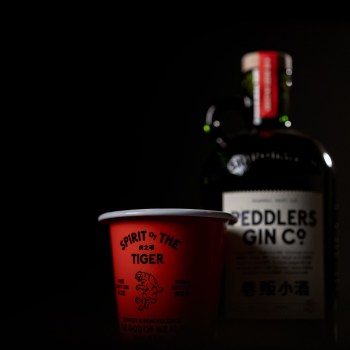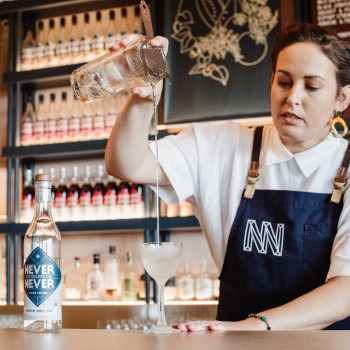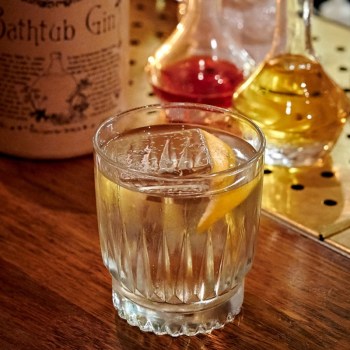On Thursday, 8 September, industry legend and Founder of Fords Gin, Simon Ford, hosted a trade masterclass at Hickson House, the Rocks.
During the course of the day’s festivities, Simon led the leading lights of Sydney’s hospitality scene through the history of gin according to cocktails, and explained the background behind Fords Gin.
Simon also spoke to Bars and Clubs about the future of his brand in the Australian on premise.
The concept of Fords Gin began, as Simon tells it, when late, great, bartender Sasha Petraske (who founded Milk & Honey) came to him with the task of producing a versatile gin that would work in every major cocktail.
“Milk & Honey didn’t have a backbar, and Sasha came to me with this challenge – he said ‘I know the rye whiskey, I’ve got a versatile rye, I’ve got a light rum, a dark rum, but when it comes to gin, I can’t figure out which gin to put in my well that will work well with a load of different cocktails.’”
“So we challenged ourselves to create a versatile cocktail gin – and that really was why Fords Gin exists,” Simon continues.
“Our goal was to try and create something that would work well with lemon citrus, lime citrus, whatever was used in drinks that you shake, and actually really complement it, so the juniper really comes through, but also in drinks that you stir, so it’s viscous ,” the founder says.
After much concerted study of cocktail and flavour books (for “more than ten years”), and trial after trial of different recipes and distilling regimens, Simon settled on the recipe for Fords Gin. The final product includes nine botanicals: juniper, coriander seeds, lemon, orange and grapefruit peel, orris, angelica, cassia and jasmine flower. Distilling was performed in partnership with tenth generation distiller, Charles Maxwell.
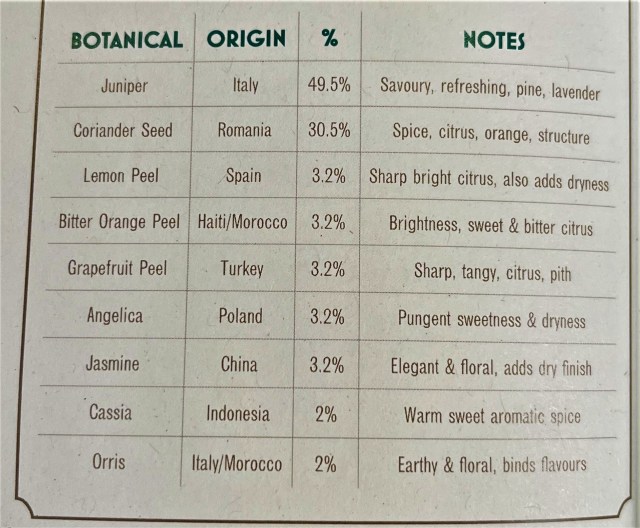
“I’ve always thought of Fords as a modern take on the London Dry gin, and something that I hope can sit alongside the classics, more than anything else,” Simon says.
Guests were then invited to taste a small pour of the gin, neat and with a little water, showcasing the gins bright, piney juniper, alongside some light floral flavours and earthy spice.
Fords Gin is clearly designed for the on-premise. Beyond its versatile flavour profile, it has a lightweight bottle and long, grooved neck, allowing for swift speed-pouring in wet hands.
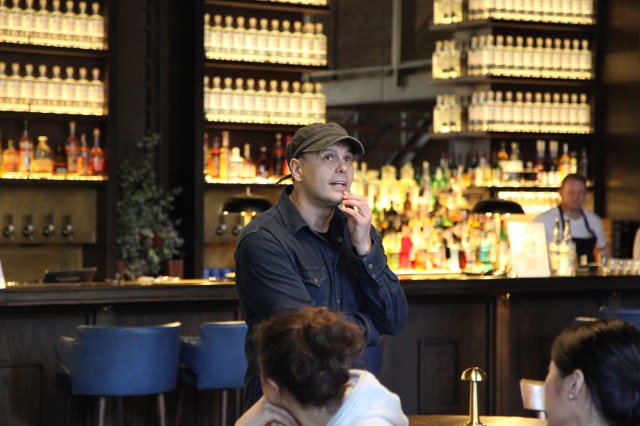
The history of gin through cocktails
The next part of the event was a journey through annals of time, as Simon led guests on a history of gin through cocktails.
The history began with the proto-cocktail: punch. In particular, the punch served at the Limmer’s Old House Hotel in London, as Simon explained.
“The first cocktail is a riff, in a way, on the Tom Collins,” Simon says.
“But it’s an older drink called Limmer’s Punch. Essentially it had an ingredient called capillaire, which was a simple syrup with orange flower water. That was the only difference between it and Tom Collins.”
Simon explained that when Americans began to visit London’s ‘American Bars’, they were somewhat perturbed by the prospect of communal service, and punches began to be reformulated as single serve drinks to meet their expectations.
Famously, the bartender at Limmer’s Hotel was named John Collins, and as the predominant style of gin was ‘Old Tom’, the name shifted.
The next cocktail was another classic – the Gimlet. Like the Tom Collins, this is another cocktail that has a connection to the gin’s spiritual home, and the home of Simon himself: England.
“[The English] were called limeys because wherever they would go, they would have a piece of lime in their mouths. And of course, it was mixed with gin on board ships. When the limes went off, obviously there was the invention of Rose’s Lime Cordial… And so henceforth, the gin gimlet was born,” Simon says.
Third was a cocktail that Simon describes as “the quintessential gin drink”: the Martini.
“Nothing gives a better representation of gin than a Martini does,” Simon comments.
“Does the gin stand up to the vermouth? Is it smooth? Is it full-bodied?”
Simon explained how the Martini was born from the Martinez, an earlier cocktail which included sweet vermouth and the sweeter style of Old Tom gin.
“But the Dry Martini propels gin into the stratosphere,” Simon adds.
Finally, the last of the cocktails is ‘modern classic’ – the sherry influenced London Calling, invented at Milk & Honey London by Chris Jepson in 2003.
“This drink is essentially a gin sour, but with the addition of Fino sherry – and it was certainly the first time I’d had Fino a cocktail. It’s a good way to end this session,” Simon comments.
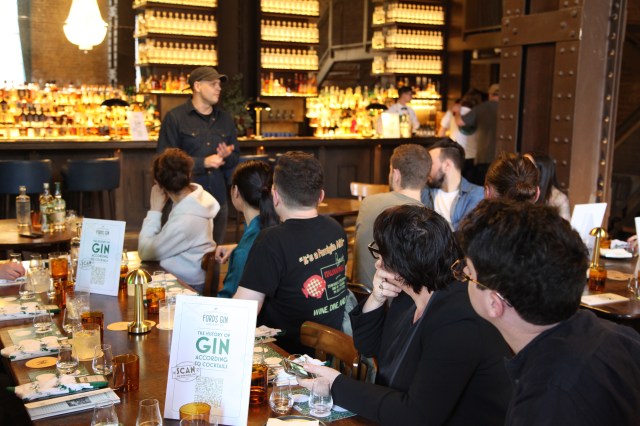
The future of Fords in Australia
Finally, guests enjoyed a taste of a very limited edition Fords Gin, the batch one of the brand’s navy strength gin. This gin, which is higher in proof, has been aged in Amontillado sherry casks for a three-week finishing period. Simon explained that this would have been the reality for most Navy gins, as they were stored in wooden barrels when aboard ships.
After the event Bars and Clubs caught up with Simon to hear whether Australian bartenders were likely to get their hands on the next batch of this gin, or any other future releases.
“Fords was created to be this versatile, do anything gin, so whenever we make another gin, it kind of has to be something that that gin [Fords standard release] doesn’t do,” Simon explains.
“So far, we’ve done these limited release small batches. So – will there be more gins coming forward along the way? Yes. Have I started working on them yet? No – so for the foreseeable future you won’t see anything, but two to three years from now, if I have a concept that works out, you will see that and that will be a more permanent fixture.”
However, Simon says that now the brand is established in Australia, any new gins he makes will make it over here, and will be in the hands of bartenders.
“That’s our DNA. We make things that will work in bars, with the hope and aspiration that people at home will get the concept of it. But we always put the bartender first,” Simon concludes.
Fords Gin is available through Brown-Forman.
